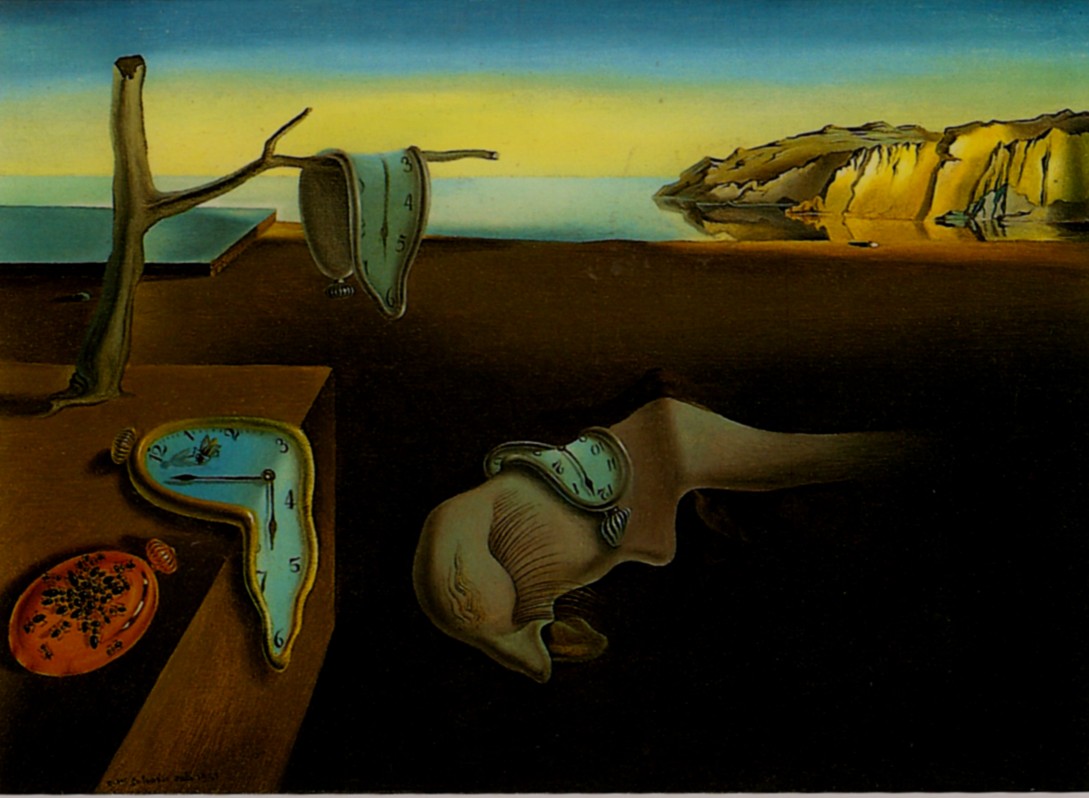The Paranoid-Critical Method
Many people are surprised to learn that this powerful work of art is somewhat small; it’s only a little larger than a sheet of notebook paper. It’s an intimate painting of an intimate subject. Dalí was a Naturalistic Surrealist, which means that the objects in the painting are rendered in a traditional way that makes them look real, as if they are from the natural world. Nevertheless, the painting is Surreal because these realistic looking objects are actually quite unusual, unique, and not of the natural world after all.
Surrealists explored the fascinating and mystifying terrain of the subconscious. They wrote manifestos and Dalí was an avid reader of Freud. This painting demonstrates Dalí’s Paranoid-Critical Method, which was a technique he developed to invest his unusual subjects with multiple meanings. He used this technique to develop his ability to “misread” symbols and find new meaning.
Dalí famously said that he was inspired to paint the melting watches while he was eating runny Camembert cheese. The real significance of this painting is much more personal. The Bay of Roses in the northern part of Barcelona where Dalí lived as a child inspired the landscape. The imagery is a “rediscovered” memory based upon a childhood event that Dalí retrieved through the process of the Paranoid-Critical Method. The melting watches derive from a memory he had of a visit to the doctor when he was a child and the doctor said, “Show me your tongue.” Dalí intentionally misread the words montrer (to show) and langue (tongue) as montre (watch) and langeur (languid). The amoeba-like form is Dalí’s self-portrait. Dalí claimed to suffer from an Oedipal complex and therefore the amoebic self-portrait could have fetal connotations and symbolize the desire the artist had to return to his mother’s womb. The ants are symbolic of his father’s anger.
Sally Coleman | The Art Minute
Suggested Reading and Viewing

